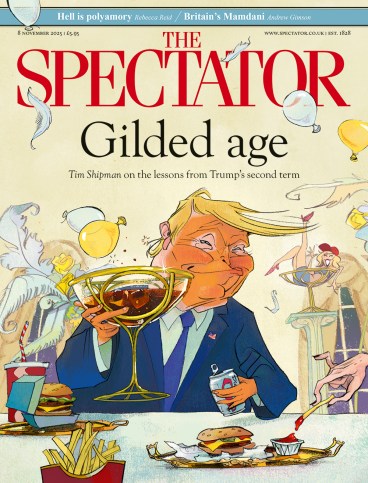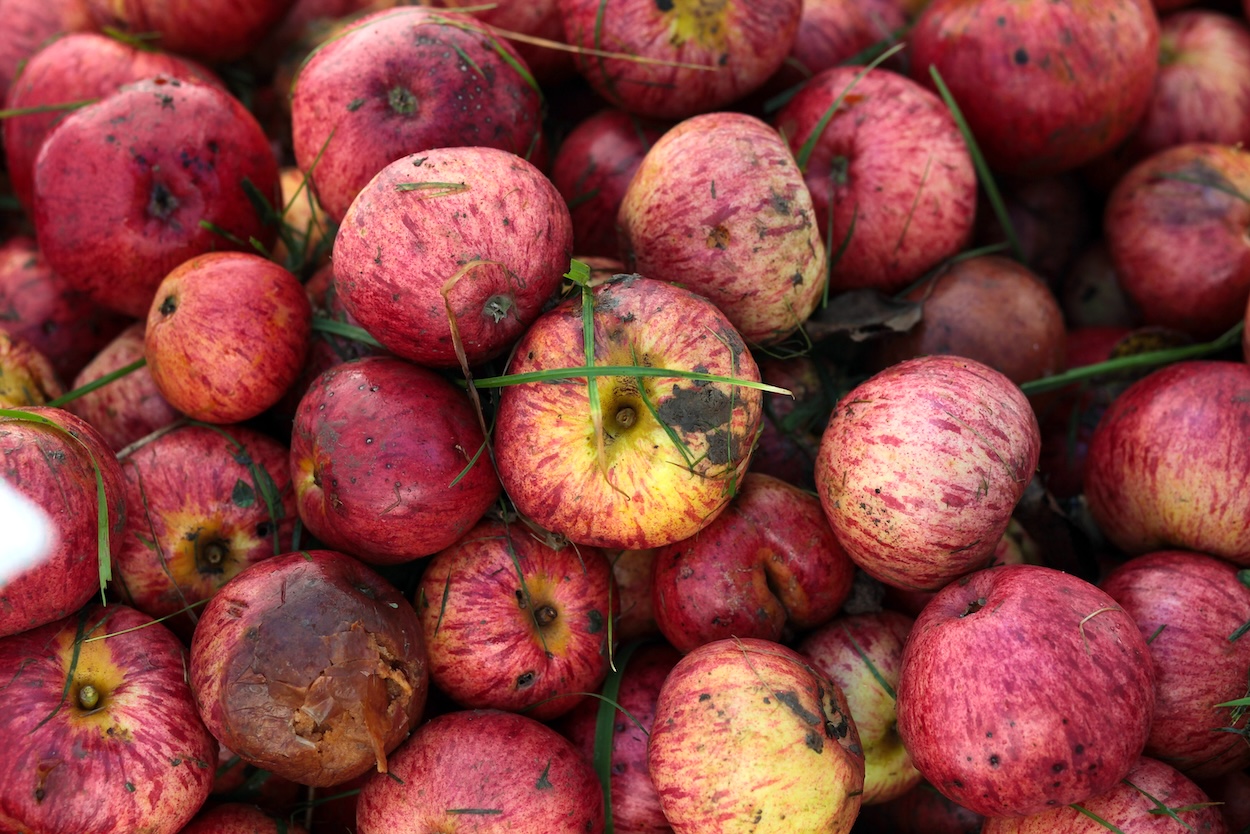
On a grey autumn morning, the apples in the National Fruit Collection look vivid. They pile up in pyramids of carmine, salmon and golden-orange around dwarf trees, which have been bred to human proportions. Their branches are well within reach but picking fruit is forbidden. These trees are part of the world’s largest fruit gene bank.
Neil Franklin, an agronomist and a trustee of the National Fruit Collection in Kent, describes it as ‘the Victoria and Albert Museum of the fruit industry’. The collection holds several types of fruit, but the apple is queen of them all: of the 4,000 or so fruit varieties here, more than 2,200 are apples. They’re used mainly for research into breeding and resistance to pests and diseases. Two trees of each variety are planted, like a pomologist’s Noah’s Ark.
Since the 1950s, 90 per cent of traditional orchards – distinct in their varieties – have disappeared
From a romantic’s perspective – which is mine – the apple collection preserves something important about Britain. Avalon comes from the Welsh word for apple. The ancient tradition of wassailing involved running through orchards, banging pots and pans to ward off bad spirits and pouring cider on the roots of the oldest apple tree to bring about a good harvest. In medieval romances, Sir Lancelot and Thomas of Ercildoune are seduced by fairies under apple boughs. Isaac Newton’s theory of gravity fell from a Flower of Kent.
The food writer Jane Grigson called apples the ‘foundation fruit of western civilisation’, but by the 1980s, we were growing only the most boring, bland and cheap varieties. ‘Humiliating, if you think about it.’ Earlier in the 20th century, the journalist Philip Morton Shand sang the praises of the Ashmead’s Kernel: ‘Its initial Madeira-like mellowness of flavour overlies a deeper honeyed nuttiness; crisply sweet, not sugar-sweet but the succulence of a well-devilled marrow-bone.’ The fruit he described still exists, but it’s grown nowhere near the scale of inoffensive varieties such as Gala, Jazz or Braeburn.
‘A lot of consumers buy with the eye and not the tongue,’ Neil tells me. When Britain joined the common market in 1972, it was a ‘big kick up the backside for fruit growing in this country’. France’s Golden Delicious invaded our shops. ‘It was a uniform product. It had a crisp crunch.’ It also had a higher yield than the British variety Cox’s Orange Pippin, and a lower price. Neil isn’t much of a fan.
Since the 1950s, 90 per cent of traditional orchards – typically older, smaller, and locally distinct in their varieties – have disappeared. Growing up, Neil spent his summer holidays picking fruit at an orchard near his home in Kent. It was a family-run farm, which is becoming a rarity these days. I ask how he feels about those kinds of places disappearing. ‘You can get nostalgic about it; family farms were part of the community,’ he says.
Apple trees were once a marker of place. They varied from county to county, even from one village to the next. Most are bred by grafting cuttings on to a rootstock, but an apple tree grown from a seed will produce a new variety, often one that’s not particularly good. The rootstock brings some genetic control to a tree, dictating its size, disease resistance and the yield of apples produced. Of the 3,000 varieties cultivated, only about 70 of these are grown in commercial orchards and a fraction of those will appear in your supermarket. Most are flown in from abroad.
‘Supermarkets make the rules,’ one farmer tells me. ‘There’s no question.’ George – not his real name – runs a family orchard in Kent with his father. ‘There’s a globalist attitude towards it, where we now get stuff from wherever – so easily, so cheaply, so effortlessly. We can fly apples in from New Zealand in the winter, so we don’t have to have English fruit.’
Part of the trouble is that, to the consumer, a Gala grown domestically isn’t any different from one grown on the other side of the planet. Pink Lady is a registered trademark, a global brand. It has no terroir. But there is a naivety, George says, in thinking that where food comes from doesn’t matter.
‘We have got an ever-growing population – and it is growing at a very, very fast rate – and land is being lost to house these people. But nobody is sitting there thinking, how are we going to feed them?’ He worries about the new inheritance tax rules, which will mean that farmers like him are better off calling it quits and selling their land for housing developments or solar and wind farms.
A few years ago, a big supplier dropped George after a good harvest because they had too much of their own fruit to take his. Sometimes, after the apples have been packaged, transported and sold at the supermarket, the cut he receives doesn’t even cover the cost of production.

George’s children are pursuing different careers, which he encourages. He loves the work, but it’s different now, not like the days when he learned from his father. ‘Now, if you lift up the bonnet of my new tractor, you wouldn’t have a clue where to start. It’s all microchips and diagnostics. And then when you have to get the manufacturers to come out to fix it, they charge £115 an hour. You think, crikey, I don’t earn that.’ Would it be better if British apple farmers became microchip menders?
Neil cuts me a slice of an Ashmead’s Kernel. It’s a drab little thing, not shiny or bright, more the colour of a Muscat grape. It has a greeny, acidic flavour, a crisp bite. I don’t get notes of marrowbone or Madeira, just the little thrill of eating something that’s fresh and picked from the branch.
The bus out of Kent takes me down the A2, past the Tesco Extra and bungalows that have seen much better days. On the stretches of road that pass through towns, St George’s flags fly from nearly every street light. What kind of people put them there? People who felt knocked into insignificance, I imagine.








Comments